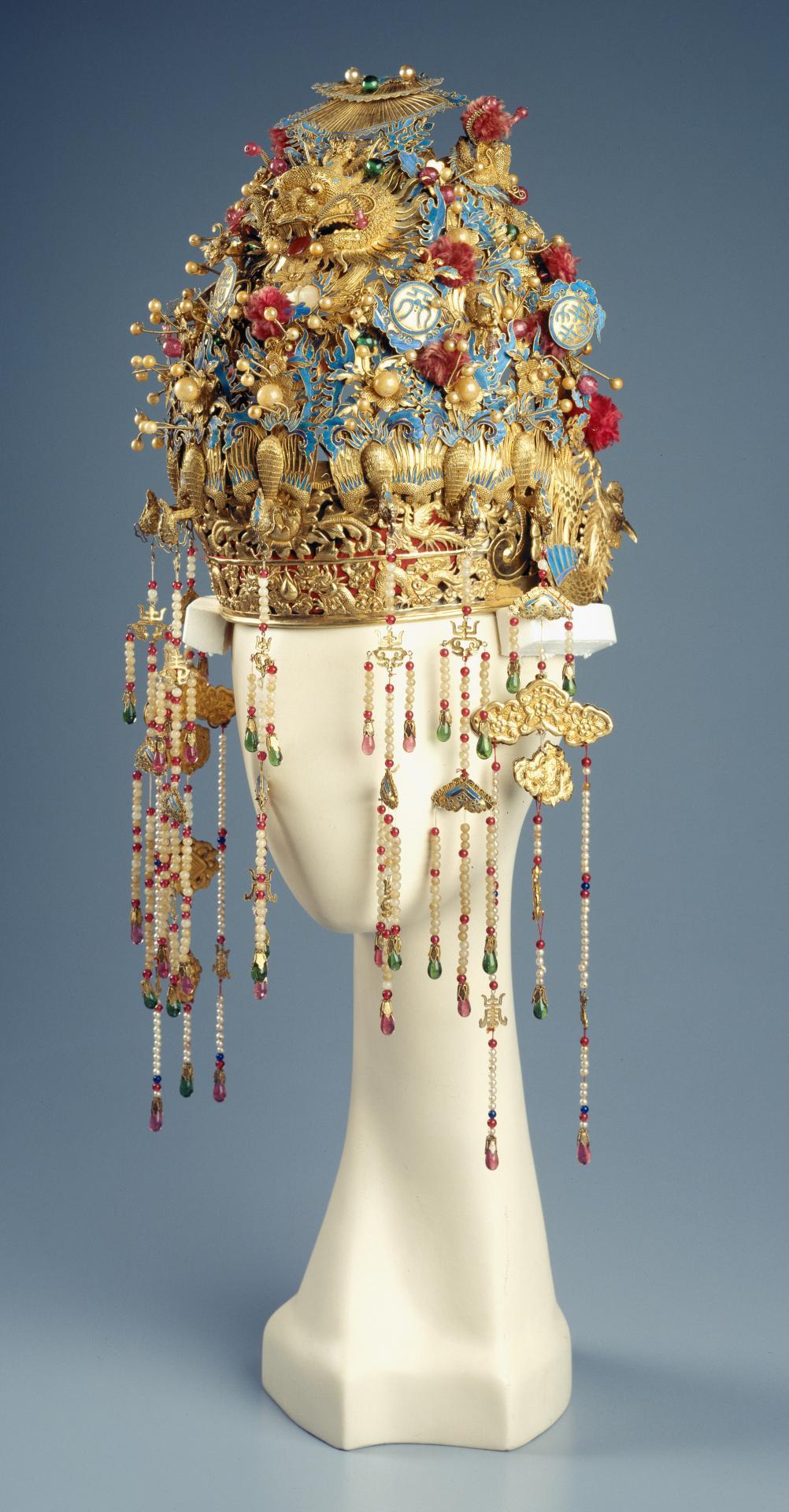fashionsfromhistory:Headdress19th CenturyChinaThis beautiful headdress is decorated with auspicious
fashionsfromhistory:Headdress19th CenturyChinaThis beautiful headdress is decorated with auspicious images in delicate and intricate filigree and sumptuous colours of gold, kingfisher blue and red wools. At the top and centre is the face of a dragon (symbol of the Emperor or the Son of Heaven) with flames. Above it is a motif that resembles a fan or a slopping roof. Below it are four circles with Chinese seal characters and flowers of peonies. Over a band of peonies at the rim of the headdress are phoenix (symbol of the Empress) with their beaks holding tassels, which are hooked onto the inner rim of the headdress and when hung will cover the face of the wearer like a curtain. On the right and left side of the headdress are two bigger phoenix. Two tassels are similar and are more elaborate than the other tassels and are holding auspicious symbols such as musical stone with decorations of the fan of an immortal and gourds (symbols of long life) etc. and the characters shou 壽meaning `long life’. Next to them and moving towards the centre are two similar and simpler tassels. The remaining tassels are similar in having the character shou in the middle string. Gilt strings with pearls extend from the headdress vibrate and synchronize with the tassels when the wearer is walking or moving. The two head ornaments are hairpins with decorations of flowers of peony in kingfisher feathers. Peony, flowers of spring, are regarded as `King of flowers’ and auspicious in bringing happiness and good fortune. These hair ornaments are hairpins that probably decorate the back of the wearer of the headdress and were pinned onto the wearer’s lacquered hair. National Gallery of Victoria -- source link
Tumblr Blog : fashionsfromhistory.tumblr.com
